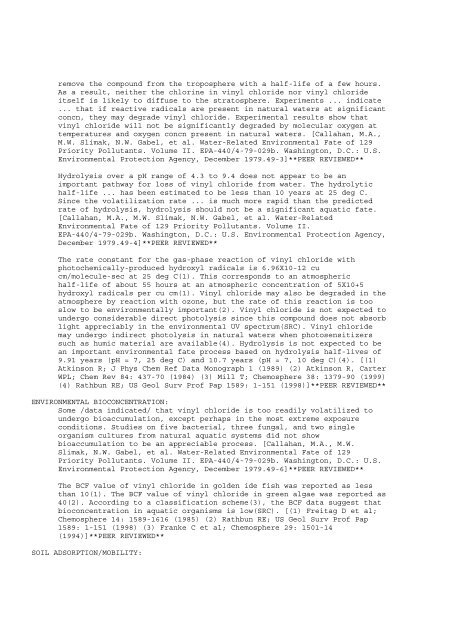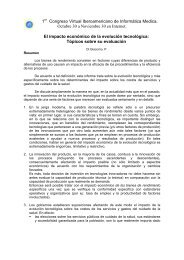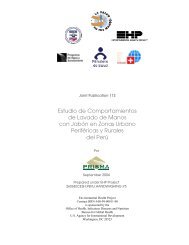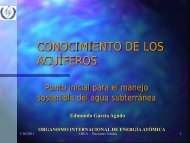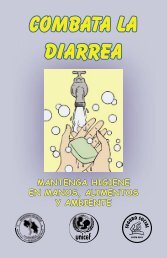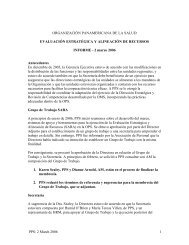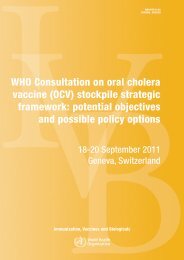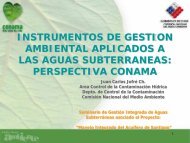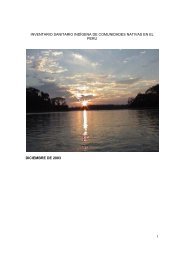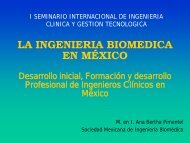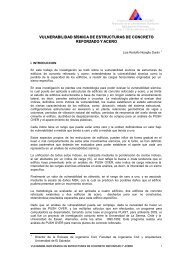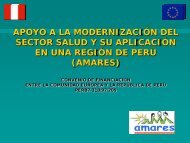a database of the National Library of M
a database of the National Library of M
a database of the National Library of M
You also want an ePaper? Increase the reach of your titles
YUMPU automatically turns print PDFs into web optimized ePapers that Google loves.
emove <strong>the</strong> compound from <strong>the</strong> troposphere with a half-life <strong>of</strong> a few hours.As a result, nei<strong>the</strong>r <strong>the</strong> chlorine in vinyl chloride nor vinyl chlorideitself is likely to diffuse to <strong>the</strong> stratosphere. Experiments ... indicate... that if reactive radicals are present in natural waters at significantconcn, <strong>the</strong>y may degrade vinyl chloride. Experimental results show thatvinyl chloride will not be significantly degraded by molecular oxygen attemperatures and oxygen concn present in natural waters. [Callahan, M.A.,M.W. Slimak, N.W. Gabel, et al. Water-Related Environmental Fate <strong>of</strong> 129Priority Pollutants. Volume II. EPA-440/4-79-029b. Washington, D.C.: U.S.Environmental Protection Agency, December 1979.49-3]**PEER REVIEWED**Hydrolysis over a pH range <strong>of</strong> 4.3 to 9.4 does not appear to be animportant pathway for loss <strong>of</strong> vinyl chloride from water. The hydrolytichalf-life ... has been estimated to be less than 10 years at 25 deg C.Since <strong>the</strong> volatilization rate ... is much more rapid than <strong>the</strong> predictedrate <strong>of</strong> hydrolysis, hydrolysis should not be a significant aquatic fate.[Callahan, M.A., M.W. Slimak, N.W. Gabel, et al. Water-RelatedEnvironmental Fate <strong>of</strong> 129 Priority Pollutants. Volume II.EPA-440/4-79-029b. Washington, D.C.: U.S. Environmental Protection Agency,December 1979.49-4]**PEER REVIEWED**The rate constant for <strong>the</strong> gas-phase reaction <strong>of</strong> vinyl chloride withphotochemically-produced hydroxyl radicals is 6.96X10-12 cucm/molecule-sec at 25 deg C(1). This corresponds to an atmospherichalf-life <strong>of</strong> about 55 hours at an atmospheric concentration <strong>of</strong> 5X10+5hydroxyl radicals per cu cm(1). Vinyl chloride may also be degraded in <strong>the</strong>atmosphere by reaction with ozone, but <strong>the</strong> rate <strong>of</strong> this reaction is tooslow to be environmentally important(2). Vinyl chloride is not expected toundergo considerable direct photolysis since this compound does not absorblight appreciably in <strong>the</strong> environmental UV spectrum(SRC). Vinyl chloridemay undergo indirect photolysis in natural waters when photosensitizerssuch as humic material are available(4). Hydrolysis is not expected to bean important environmental fate process based on hydrolysis half-lives <strong>of</strong>9.91 years (pH = 7, 25 deg C) and 10.7 years (pH = 7, 10 deg C)(4). [(1)Atkinson R; J Phys Chem Ref Data Monograph 1 (1989) (2) Atkinson R, CarterWPL; Chem Rev 84: 437-70 (1984) (3) Mill T; Chemosphere 38: 1379-90 (1999)(4) Rathbun RE; US Geol Surv Pr<strong>of</strong> Pap 1589: 1-151 (1998)]**PEER REVIEWED**ENVIRONMENTAL BIOCONCENTRATION:Some /data indicated/ that vinyl chloride is too readily volatilized toundergo bioaccumulation, except perhaps in <strong>the</strong> most extreme exposureconditions. Studies on five bacterial, three fungal, and two singleorganism cultures from natural aquatic systems did not showbioaccumulation to be an appreciable process. [Callahan, M.A., M.W.Slimak, N.W. Gabel, et al. Water-Related Environmental Fate <strong>of</strong> 129Priority Pollutants. Volume II. EPA-440/4-79-029b. Washington, D.C.: U.S.Environmental Protection Agency, December 1979.49-6]**PEER REVIEWED**The BCF value <strong>of</strong> vinyl chloride in golden ide fish was reported as lessthan 10(1). The BCF value <strong>of</strong> vinyl chloride in green algae was reported as40(2). According to a classification scheme(3), <strong>the</strong> BCF data suggest thatbioconcentration in aquatic organisms is low(SRC). [(1) Freitag D et al;Chemosphere 14: 1589-1616 (1985) (2) Rathbun RE; US Geol Surv Pr<strong>of</strong> Pap1589: 1-151 (1998) (3) Franke C et al; Chemosphere 29: 1501-14(1994)]**PEER REVIEWED**SOIL ADSORPTION/MOBILITY:


